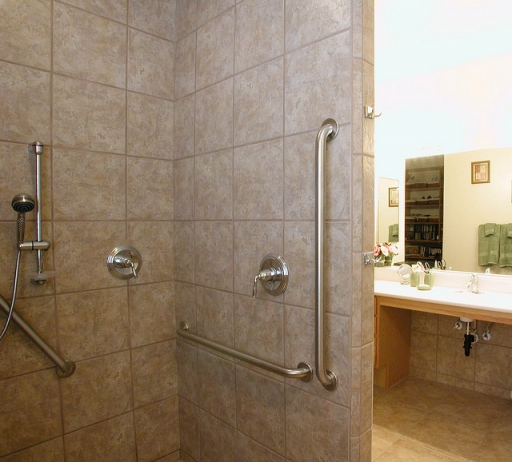Choosing to live out your years in your own home is a comforting notion for the elderly. With home care services available, remaining at home is more possible than ever before. But living in a non-regulated environment comes with risks, specifically of slips and falls. Even for seniors in relatively good health, severe injury can result from minor trips. While no home or facility is guaranteed safe, making modifications and upgrades can go a long way to ensuring the safety of seniors.

Where to Start
Safety modifications and upgrades go beyond installing grab bars in the bathroom. It’s important to evaluate your parent’s living space for any and all potential risks, not just for falls and trips, but for all areas of safety including fire, gas, and electric hazards. Take the time to thoroughly assess the home inside and out with a complete checklist of potential risks. If you or a sibling has the time, spend a day with your parent as they go about daily activities in the home and make note of any areas of potential risk. This is also a great way to learn how much, if any, assistance from non-medical caregivers or home health aides your parent may require in order to adequately perform their daily activities. You can also enlist the assistance of a geriatric care manager who will evaluate the home and make recommendations as needed, or a Certified Aging-in-Place Specialist (CAPS) who can work with you or your parent to create a safety-focused remodeling plan.
In addition to evaluating your parents’ home for safety concerns, it’s important to have their personal risks of falling evaluated as well. You can talk to a physician or physical therapist about performing a fall risk assessment or you can go over a Fall Risk Screening questionnaire with your parents. This questionnaire lends an excellent opportunity to open an honest discussion about your parents’ wishes, not just about their health and home modifications, but about important end-of-life matters as well.
What to Do
Before beginning the “adding” phase of the modification process, make sure all possible threats are removed. Take care of subtle hazards like long wires and plugs, loose floorboards or bricks, loose throw rugs, and problematic furniture placement. Remember that you’re not just looking for immediate hazards, but also to ensure that your parents maintain their sense of independence as they age. Many of the modifications you can implement are designed to increase accessibility and ease of use, which are just as important to your parents’ emotional wellbeing.
While major modifications like ramp installation, doorway widening, and stair-leveling or removal can be costly and require licensed contractors, you can complete many of the most common modifications and upgrades yourself.
Some of the upgrades you can make yourself include:
- Installing bars in showers and bathrooms; installing chairs, non-slip mats, and movable showerheads in shower
- Placing slip-resistant mats under heavy rugs and furniture
- Installing additional lighting in and outside of the home including “clap-on” lights and hallway lighting
- Replacing small knobs with easier to open D-shaped handles
- Installing skid-proofing on stairs
Additional Resources
The home modification and safety upgrade process is a time consuming one, so don’t expect to cover all of your bases in a day or two. Like other areas of senior care, it’s best to consider your options for modification before the need arises so that you have adequate time to successfully implement changes. There are plenty of resources available to make the process easier, including homemods.org, which is a project of the Fall Prevention Center of Excellence, as well as the comprehensive HomeFit Guide by the AARP which includes a complete checklist for assessing and implementing home modifications.